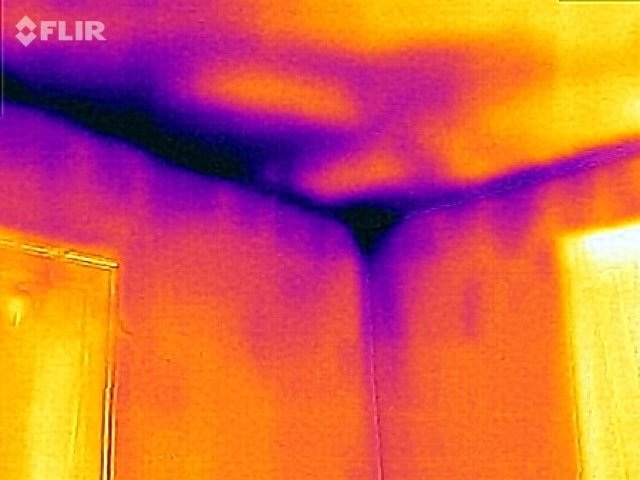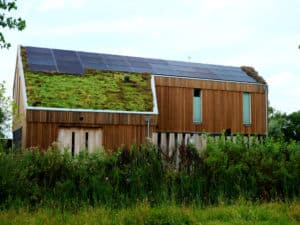Thermal bridging can feel like a bit of a dark art. Read our latest blog to find out what thermal bridging is, what schemes are available and how you can avoid it.
SAP conventions mean that there are a lot of (necessary!) hoops to jump through if you want to be considered environmentally and energy efficient. One of these is thermal bridging.
Thermal bridging can feel like somewhat of a dark art. It’s a popular and much used term, but a lot of the time our clients don’t actually understand what it means (and how important it is). Which is why we wanted to deconstruct and unwrap thermal bridging, share some of the schemes available for it and offer a few top tips to avoid thermal bridging in the first place.
YOU MIGHT LIKE: TEN TOP TIPS TO PASS YOUR SAP CALCULATION
What is thermal bridging?
Thermal bridging refers to areas of a property or development where heat flow is different, resulting in a path of least resistance when it comes to heat loss. It is one of the most significant sources of heat loss in a building and occurs when there is a direct connection between the inside and outside of a building. This results in elements of a building being more thermally conductive, causing heat to escape more rapidly.
To understand your rate of thermal bridging, you need to know your Psi values: these show the rate of heat loss between at some of your junctions. Tackling thermal bridging typically means choosing from different construction types based on the Psi values that have already been calculated. We refer to these as approved details.
When we talk about reducing thermal bridging to improve your SAP calculation, we are exploring ways to actually improve construction in order to minimise the chances of heat loss and energy escaping.
What thermal bridging schemes are available?
In the past, there were two main sources of accredited details which contractors can follow. These came from the Planning Portal and the Energy Saving Trust – however, nowadays these schemes don’t quite cover all aspects of the current stringent requirements. They serve a purpose (and we’ve listed them below – the ECD and ACD schemes) but there are many more on the market to explore and benefit from. Below are a handful of the schemes that support thermal bridging regulations.
Accredited Construction Details – The majority of the junctions covered in SAP are represented in this scheme. It’s the most common set of approved details used in SAP. You can read more about them here.
Enhanced Construction Details – You would use these details in conjunction with ACDs. ECDs cover less junctions but are designed to improve upon and replace some of the less efficient ACDs. Read more here.
BRE Certified Thermal Details and Products Scheme – BRE offers a fantastic database that ‘allows users to search a wide range of accurate and independently assessed thermal junction details’. The database isn’t finalised by any means, but it’s still a valuable portal. You can see it on BRE’s website.
Accredited Construction Details (Scotland) 2015 – This is the Building Standards Division of the Directorate for Local Government and Communities in Scotland. It has produced an improved set of details, which you can see here.
Advanced Details – This is an online Thermal Bridging database which strives to simplify the process of calculating junctions, whilst providing options and tips for enhanced performance.
LABC – Local Authority Building Control (LABC) is a not-for-profit membership organisation that represents all local authority building control teams in England and Wales. You can take a look at the full list of their approved details here. Their full list of approved details can be viewed on their website.
Can you calculate your own thermal bridging psi?
It is possible to create your own Psi values from bespoke construction types. But keep in mind that it isn’t easy – it takes time and money, so you first need to check that the benefits outweigh this.
People who this may be advantageous for include:
- Housebuilders who frequently build with a standard set of junctions
- Developers and contractors struggling with design restrictions
Chances are that if you address thermal bridging at the design stage (ALWAYS the best approach), then at least one of the approved junction types should be suitable. An energy consultant can support you with this decision.
Quick fire tips for thermal bridging.
We’ve written extensively about how to avoid thermal bridging, but let’s wrap things up with some speedy tips to add to your construction plans:
- Train developers to be fully trained in thermal bridge free construction
- Increase the capacity for insulation
- Follow building strategies for new builds
READ MORE HERE: HOW TO AVOID THERMAL BRIDGING
Can Buildpass help me to avoid thermal bridging?
Yes! We are proud to say that we offer thermal bridging assessments here at BuildPass. In the assessments, we will carry out linear thermal bridge calculations, point thermal bridge calculations and a mould growth risk assessment to thoroughly check every avenue of the build. After the result has been determined, we will then advise you on the best next steps for you and your build, helping you to reduce heat loss and allow you to create the best energy efficient home possible.
When building or renovating your home, it can be confusing to know what to do next, but we are here to take some of that weight off of your shoulders and allow you to have fun in the process. Book in for a call with a member of our team to get started on your transformation.




















